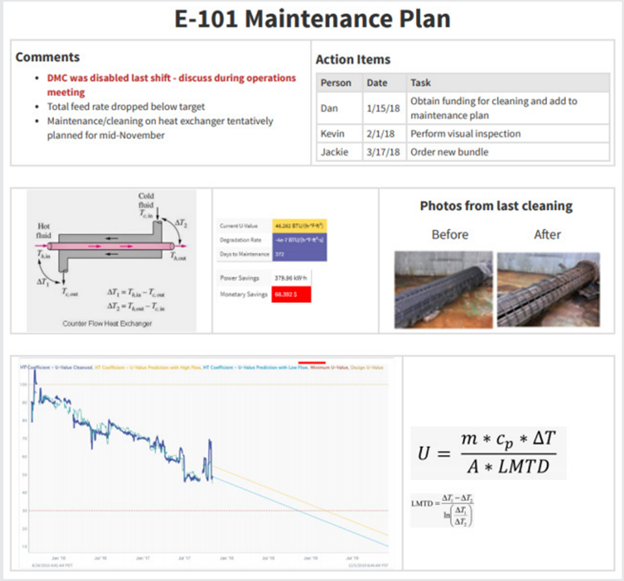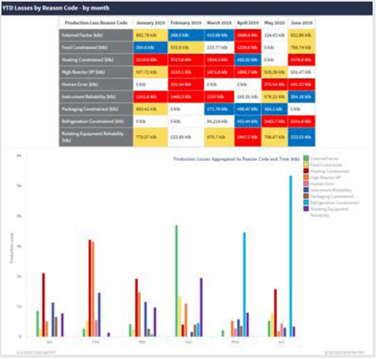The Advanced ROI of Advanced Analytics
March 17, 2021

Guest Blog Post By: Brittany Ebaugh, Seeq
What Are Advanced Analytics?
Many companies within the process manufacturing realm are stuck being DRIP (data-rich, information-poor). This is because data from several disparate sources within their operations is overwhelming, and causes time-consuming efforts within spreadsheets, trying to analyze performance indicators to make decisions to improve overall production and performance.
The solution is advanced data analytics, a leading technology utilizing tools such as machine learning, IIoT, digital transformation, and time-series data analysis to provide transformational insight. The ROI of advanced data analytics is far-reaching, major, and often immediate. Below are a few deep dives into how the technology is being used in today’s leading operations.
Advanced Analytics Use Cases for Process Manufacturers
Leveraging advanced data analytics technology can provide an immediate and colossal ROI across several industries.
Heat Exchanger Monitoring—Predictive Analytics for Maintenance
When oil is flowing through heat exchangers, deposits cause fouling and decrease the ability to transfer heat effectively. To ensure the temperature is maintained, the exchanger needs to run at a lowered capacity or even shut down to be properly cleaned. To achieve optimal maintenance on heat exchangers, it’s important to identify when to change operations to extend the life of a heat exchanger or when to take it offline and clean.
A major oil and gas firm in the U.S. had been operating its exchangers on a set maintenance schedule and taking them offline every couple of months to clean, but this was causing inefficiency and unnecessary costs.
The operation was in need of a risk-based maintenance plan to optimize processing rates, operating costs, and maintenance expenses. Their engineers were manually combining data entries in a spreadsheet, spending days formatting and filtering the data to try to identify an optimal plan.
After implementing advanced analytics, the refinery’s engineering team created a predictive model, accurately predicting when maintenance on their heat exchangers would be required. They were able to investigate how different operating conditions would affect the lifecycle before maintenance is needed and compare current cycles with previous ones to determine root causes of accelerated fouling.
The company seamlessly scaled the analysis out to all other sites and heat exchangers and eliminated weeks of work for their engineering teams. The refinery now not only saves millions of dollars per year due to the improved turnaround planning and improvement opportunities related to heat exchangers, but also saves roughly $10,000 per year in reduced production loss alone.

A maintenance report created with Seeq Organizer. The report includes charts and KPIs generated in Seeq Workbench alongside clarifying comments and pictures.
Valve Health Diagnostics
Valves, a common asset within nearly all verticals of the process manufacturing industry, have a similar challenge to heat exchangers: It’s difficult to characterize valve performance to anticipate changes in their health in near real-time. A balance is required to know when maintenance is truly necessary, as a calendar-based maintenance strategy can cause effort and costs that aren’t actually required. Neglecting proper maintenance causes unplanned downtime, a direct route to lost revenue, and heightened risk to operational safety and the environment.
With advanced analytics, process manufacturers can utilize condition-based monitoring (with key metrics such as stroke time and static friction that contribute to identifying bad actors, risks, and maintenance prioritization) to analyze valve health across an entire fleet. Engineering teams can take advantage of historical data to develop a predictive maintenance forecast and detect failing valves ahead of time.
Companies that implement advanced analytics can effectively reduce the chances of valve failure, saving tremendous costs due to lost production and manpower per event, per asset.

Treemap to show the current valve health according to the Overall Valve Health Score.
Loss Monitoring and Categorization
All manufacturing industries experience multiple performance losses, including:
- Production losses
- Product quality losses
- Energy losses
- Raw materials losses
- Environmental/Regulatory losses
These can have a direct, negative impact on profitability, environmental direction, and in some cases, license to operate. These losses need to be identified, investigated, categorized, and summarized to be able to analyze for performance benchmarking, annual planning, and capital project justification.
Traditional methods include manual, inefficient, and cumbersome hours in spreadsheets. Process engineers have reported spending one week for each month just aggregating a single unit’s loss data.
Advanced analytics enables engineers to logically spot trends, identify and quantify events that cause performance losses. Periodic reports containing this information are easily and automatically updated with seamless sharing capabilities, and ideal models are recorded and directly compared to future equipment performance.
Automatically identifying the improper thresholds, bad actors, and conditions causing performance loss saves one to five days of an engineer’s time per unit, per month. Advanced analytics allows process manufacturers to spend more time executing optimization projects for production, and less time developing the justifications for costs.

One of the Conveyor Belt Tension models with the projected maintenance date called out with the cursor and capsule (yellow).
Seeq’s Advanced Analytics Application
Seeq’s advanced analytics application can reliably provide context and insight into process manufacturing operations across verticals including oil and gas, chemicals and petrochemicals, pharmaceuticals and life sciences, food and beverage, water and wastewater, utilities, mining and metals, power generation, and pulp and paper. Learn more about their leading approach here.
Grantek joined the Seeq Partner Program in 2019 to better deliver advanced analytics solutions to our customers. Click here to see how this partnership helps improve Smart Manufacturing: YouTube Video. Click here to see how this partnership helps with advanced analytics for Batch Process improvements: YouTube Video.
Founded in 2013, Seeq publishes software applications for manufacturing organizations to rapidly find and share data insights. Oil & gas, pharmaceutical, specialty chemical, utility, renewable energy and numerous other vertical industries rely on Seeq to improve production outcomes, including yield, margins, quality, and safety. Headquartered in Seattle, Seeq is a privately held virtual company with employees across the United States and sales representation in Asia, Canada, Europe, and South America. For more information, visit seeq.com.
